Zoom Zoom: Testing 10x Hybrid Zoom in Dublin with the Huawei P30 Pro and Oppo Reno 10x Zoom
by Ian Cutress on May 22, 2019 10:30 AM EST
One of the main issues facing the smartphone industry is stagnation. From generation to generation, we see the main smartphone manufacturers gunning for differentiation, and we’ve seen features such as multiple cameras, all-screen displays, and in-screen fingerprint readers become widespread among the high-end devices in the past couple of years. One of the most recent features available on a couple of new smartphones is a strong zoom, up to 5x/6x optical zoom paired with software to offer a 10x ‘lossless hybrid’ zoom and up to a 50x digital zoom. We recently got ahold of the Huawei P30 Pro and the Oppo Reno 10x Zoom for a quick showdown, given that these are the first devices to both offer this new feature.
Get Perpendicular: Mounting a New Camera
Offering zoom on a smartphone has been a difficult process. In order to enable zoom that can focus over a wide range of distances, the camera needs a sizable distance between the front lens and the camera sensor, however smartphones only offer a limited amount of z-height in order to do so. During the early part of this decade, one of the key metrics for smartphones was z-height (or thickness), and there has been a continual driving force to making a smartphone as thin as possible.
We’ve seen smartphones with these slim designs offering a mild 2x or 3x optical zoom, often with camera modules and lens that stick out of the back of the device, resulting in a non-flush rear. These basic zoom offerings were obviously launched to a big fanfare: they were differentiating at the time. But in order to go further, smartphone manufacturers have had to get sideways.
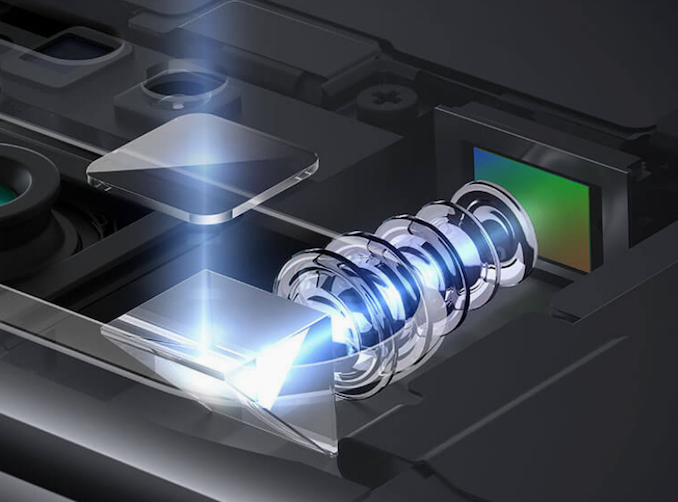
Huawei's angled lens allows for a deeper camera mechanism
Both of the zoom cameras on the Huawei P30 Pro and Oppo Reno 10x Zoom follow the same philosophy – rather than let the light into the lenses and straight to the camera module, the light enters and hits a prism, directing the light at right angles to the entry point. This allows for a longer camera module, increasing the potential zoom of the camera.
Of course, it isn’t as simple as just adding a prism and manipulating the lenses. There are other considerations when it comes to stabilization – the lens and prisms are now moving in different planes to regular smartphone cameras, and stabilization motors need to be applied differently. In the case of Oppo, we were told that it’s actually the prism that matters the most, while Huawei may do something similar, but both devices offer OIS (optical image stabilization) on the zoom camera as well as AI-enhanced stabilization using either the Snapdragon 855 AI Engine (Oppo) or the Kirin 980 NPU (Huawei).
Oppo are keen to promote the story behind its zoom camera, working with a specialist company in order to do so. That company, since the launch of the Reno 10x Zoom, has since been acquired by Sony, making this an interesting development onto whether Oppo will offer something similar in the future. That being said, the Reno 10x Zoom offers a 6x optical zoom, with up to 10x hybrid zoom, while the Huawei only offers a 5x optical zoom, with up to 10x hybrid.
Optical vs. Hybrid vs. Digital
On smartphone cameras, especially zoom ones, there are three different types of zoom to consider: Optical, Hybrid, and Digital. Optical zoom is the natural zoom capabilities of the camera module, and depending on the module it might offer ‘1x and 5x’ optical zoom or ‘1x to 5x’ optical zoom. The difference between these two depends if the lenses can move – if the lens can move, then the optical zoom is a continuous range, otherwise it is only at the two fixed points.
Hybrid zoom, which can be described as ‘lossless hybrid zoom’, is a mixture of hardware and software based zoom. The device aims to offer a full resolution image, however software (possibly AI) algorithms are applied beyond the natural optical zoom of the camera module in order to provide a natural image at a higher zoom. Ultimately the better the natural optical zoom of the camera, and the better the software, the better the hybrid zoom.
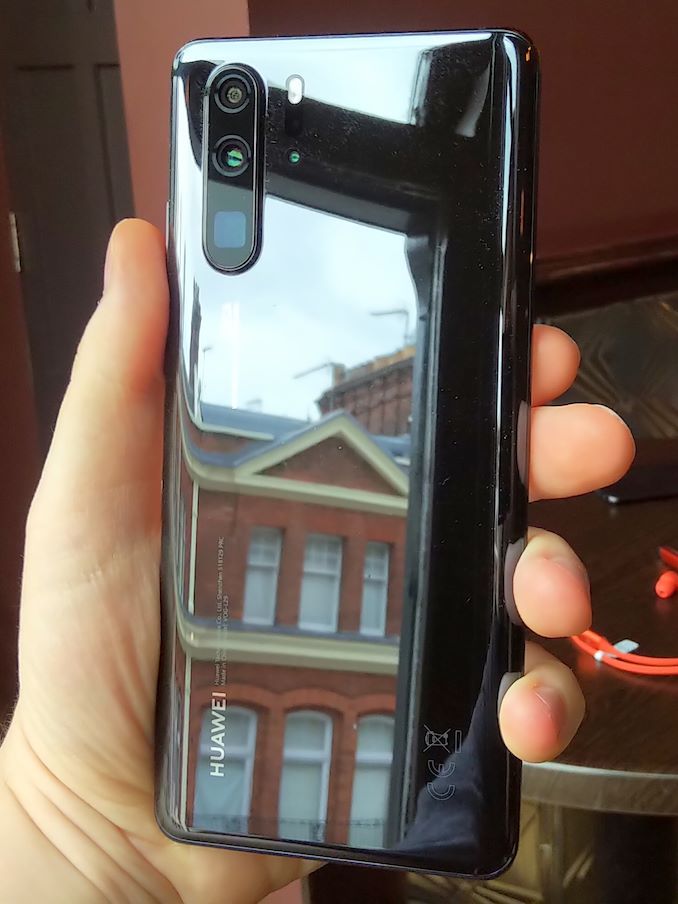
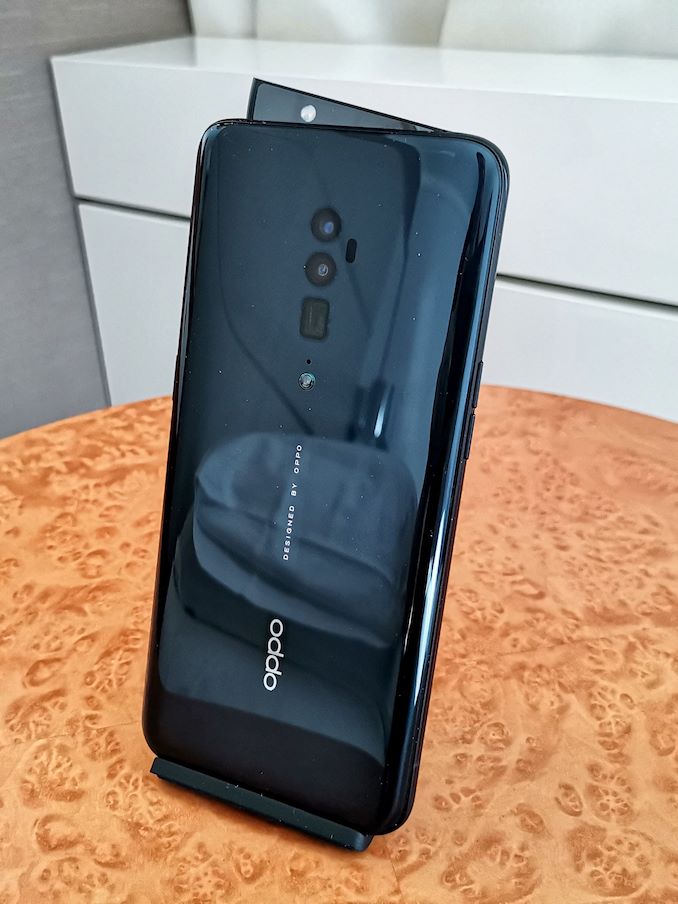
Huawei P30 Pro vs Oppo Reno 10x Zoom
Digital zoom, by contrast to all of the above, is a crop of an optical image – it is a faux zoom that just results in a lower resolution image to give a sense of ‘zoom’.
So the Huawei P30 Pro offers a 1x to 5x optical zoom, a 5x to 10x lossless hybrid zoom, and a 50x digital zoom. The Oppo Reno 10x Zoom offers a 1x and 6x optical zoom, a 6x to 10x hybrid zoom, and a 30x digital zoom.
This Test
In this photo comparison, I had access to a retail version of the Huawei P30 Pro (build 9.1.148) and a pre-production model of the Chinese version of the Oppo Reno 10x Zoom (), which I must stress has non-final software. These devices play in different price brackets: the P30 Pro is an $1100 device, aiming at the high-end premium of the market, whereas the Oppo Reno 10x Zoom in the same configuration is an $850 model. The Oppo Reno also has a full screen display, and the ‘pizza slice’ pop-up selfie camera, which if it were a notched phone like the Huawei would actually make it a little bit cheaper. I had the two devices over a long weekend break in Dublin, so I used the opportunity to take a series of comparison shots.
How the test was performed involved using the standard settings in the camera app, with AI enabled (as would normally be the case). The differences between the two devices come down to the automatic zoom presets. On each interface, there is a small bubble saying ‘1x’, indicating the zoom. Users can either hold this button down, and fine tune the levels of zoom, or press it once to cycle through the zoom presets. Unfortunately, each device offers different presets:
Oppo Reno 10x Zoom: Wide, 1x, 2x, 6x, 10x
Huawei P30 Pro: Wide, 1x, 5x, 10x
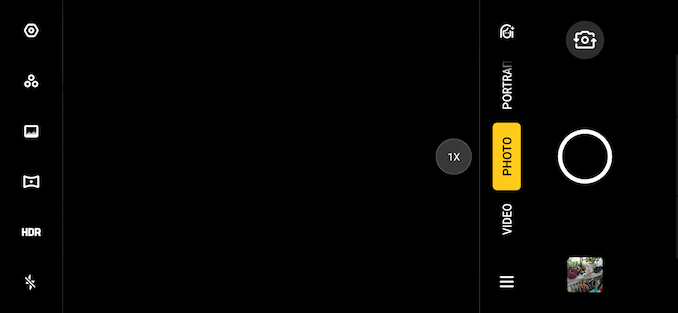
Top: Huawei P30 Pro. Bottom: Reno 10x Zoom
The Oppo smartphone offers a 2x zoom, which is actually super helpful in a lot of cases where only a small zoom is needed. Andrei and I have argued as to whether these presets are valuable: for me when I want to take a quick zoomed photo, it is very valuable, and having a 2x zoom is great if you don’t need a super zoom offering. Andrei prefers sliding to zoom, and so doesn’t have much of an issue with the concept. Personally I think the Reno gets a +1 here by having that 2x zoom mode.
But because the smartphones offer a different number of preset zoom levels, it means in our comparisons that the Reno will have one more zoom picture in each comparison compared to the P30 Pro.


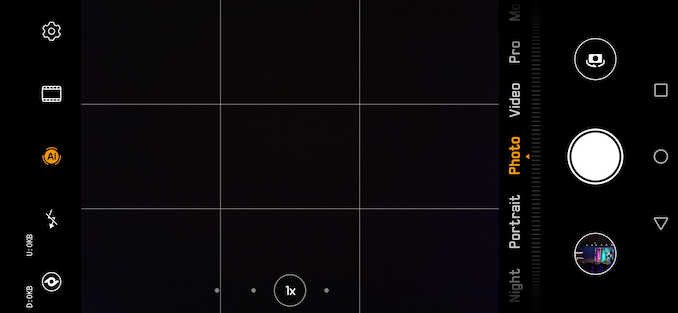








28 Comments
View All Comments
anomy - Thursday, May 23, 2019 - link
Someone had to say it! Thank you!BedfordTim - Thursday, May 23, 2019 - link
The cows show it beautifully.peevee - Wednesday, May 22, 2019 - link
Purple skies in Huawei pics - are they seeing red right now?Zizy - Wednesday, May 22, 2019 - link
Picture sets 1 and 2 have "Reno 10x zoom" at the bottom of all Reno images. Others don't. I think it is better to omit that information for these comparisons when looking at the (small) image on the page directly, but they are nice if you want to download images or compare full-sized ones.For picture set 6, I think readability of the text is a bit problematic given angle of the paper is a bit different and has more reflections for Huawei. But I agree that Oppo still wins this aspect and I agree with verdict here.
As for zoom levels, I believe x2 and x5 options are the best in most pictures shown here. x6 could be nice if Reno managed to focus better. x10 is of too poor quality to serve as a nice picture, while just the text on the bike really shows some extra value in x10 zoom for Oppo (while Huawei, despite generally better x10 images, doesn't have even that).
Hrel - Friday, May 24, 2019 - link
HOW IS IT POSSIBLE YOU ALL ARE STILL PUSHING HUAWEI?!?!?!?!If they're paying you or sending you products for free you are REQUIRED to disclose that fact, I don't see it mentioned however!
tygrus - Sunday, May 26, 2019 - link
Judging by your 10x zoom test images:The Huawei has a larger dynamic range, higher resolution and lower noise (or better focus). They typically look more natural and avoid some highlight clipping because of darker exposures (thou users don't like darker images).
The Oppo is using more image processing to increase contrast and smooth noise.
The Oppo photos don't have the same detail as the Huawei photos.
tygrus - Sunday, May 26, 2019 - link
The problem is, Huawei staff have a habit of stealing trade secrets and dodgy business practices.athiril - Monday, June 10, 2019 - link
The Reno 6x looks absolutely awful, extremely soft and low detail. It is not better in any single shot. The sign on the bike is simply hanging down more in the Reno shot, the Huawei is many times better. Also a lot of artefacting in the Reno images. Was hoping the Reno would be as good or better. Hopefully its better on the production model, I'd prefer it to the Huawei if possible.The Huawei 5x images are also very soft, but its worlds better.